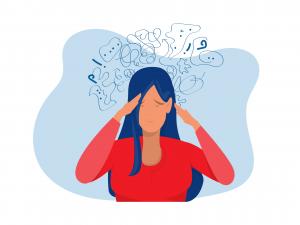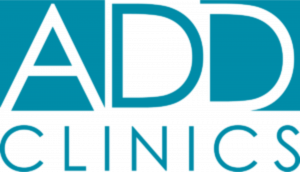Their ability to regulate impulsivity, enhance focus, and support behavioral control makes them valuable options, whether used alone or in combination with stimulant medications”
GULFPORT, MS, UNITED STATES, January 31, 2025 /EINPresswire.com/ -- Attention Deficit Disorder (ADD) affects individuals of all ages, impacting focus, impulse control, and overall daily functioning. While stimulant medications are often prescribed as the primary treatment, non-stimulant options such as Clonidine and Guanfacine offer alternative approaches for managing symptoms. Dr. Stanford Owen, owner of ADD Clinics in Gulfport, Mississippi, highlights the role of these medications in treating ADD, particularly for individuals who may not tolerate stimulant therapy or require additional support in symptom management.— Dr. Stanford Owen
Understanding Clonidine and Guanfacine in ADD Treatment
Clonidine and Guanfacine belong to a class of medications known as alpha-2 adrenergic agonists. Originally developed to treat high blood pressure, these medications have been found effective in managing ADD symptoms by regulating certain brain functions associated with attention, impulse control, and hyperactivity. Both medications affect norepinephrine pathways, which play a key role in cognitive function and behavioral regulation.
These medications are particularly useful in cases where:
ADD symptoms include high levels of impulsivity or aggression
Sleep disturbances accompany ADD, requiring a treatment that also promotes better rest
How Clonidine Works in ADD Management
Clonidine affects the prefrontal cortex, an area of the brain responsible for executive function, attention, and impulse control. It helps regulate hyperactivity and impulsivity by reducing excessive norepinephrine signaling, which can lead to overstimulation in individuals with ADD.
Key benefits of Clonidine in ADD treatment include:
Reduction of impulsivity and aggression in children and adults
Support for sleep regulation, particularly for those who experience difficulty falling or staying asleep
Adjunct therapy for stimulant medications, helping to manage stimulant-induced side effects such as insomnia or anxiety
Clonidine is available in both short-acting and extended-release formulations, allowing for flexible dosing strategies based on individual needs. The extended-release version is often preferred for sustained symptom control throughout the day.
How Guanfacine Differs from Clonidine
Guanfacine, though similar to Clonidine in its mechanism of action, has a more selective effect on norepinephrine receptors in the brain. This selectivity results in fewer sedative effects compared to Clonidine, making it a preferred option for individuals who need symptom control without excessive drowsiness.
Guanfacine is available in:
Immediate-release formulation, which is sometimes used off-label for ADD symptom relief
Extended-release formulation (Guanfacine ER), which is FDA-approved for the treatment of ADD in children and adolescents
The benefits of Guanfacine in ADD treatment include:
Improved attention and working memory, particularly in younger patients
Less sedation compared to Clonidine, making it more suitable for daytime use
Effective reduction of hyperactivity, particularly when used alone or alongside stimulant medications
Comparison of Clonidine and Guanfacine for ADD Treatment
Feature Clonidine Guanfacine
Primary Action Reduces impulsivity & hyperactivity Enhances attention & working memory
Sedation Level More sedating Less sedating
FDA Approval Approved for ADD (ER form) Approved for ADD (ER form)
Use with Stimulants Often used to manage stimulant side effects Used as a standalone or adjunct therapy
Sleep Benefits Helps with sleep disorders Milder sleep improvement
Combining Alpha-2 Agonists with Stimulants
In many cases, Clonidine or Guanfacine is used alongside stimulant medications to enhance overall symptom control. This combination is particularly effective when:
Stimulants alone do not provide full symptom relief
Side effects such as sleep disturbances or irritability occur with stimulant use
Additional help with emotional regulation and behavioral control is needed
Extended-release versions of Clonidine and Guanfacine allow for once-daily dosing, making them convenient for individuals who require steady symptom management.
Conclusion
Clonidine and Guanfacine serve an important role in ADD treatment, providing non-stimulant alternatives for individuals who need additional symptom management. "Their ability to regulate impulsivity, enhance focus, and support behavioral control makes them valuable options, whether used alone or in combination with stimulant medications," adds Owen. As research and clinical experience expand, these medications continue to provide effective solutions for individuals managing ADD across different age groups.
About ADD Clinics
ADD Clinics, located in Gulfport, Mississippi, provides specialized care for individuals with Attention Deficit Disorder (ADD) and related conditions. Led by Dr. Stanford Owen, the clinic focuses on personalized treatment approaches, combining medication management, behavioral strategies, and patient education to optimize outcomes.
Morgan Thomas
Rhino Digital, LLC
+1 504-875-5036
email us here
Visit us on social media:
Facebook
Legal Disclaimer:
EIN Presswire provides this news content "as is" without warranty of any kind. We do not accept any responsibility or liability for the accuracy, content, images, videos, licenses, completeness, legality, or reliability of the information contained in this article. If you have any complaints or copyright issues related to this article, kindly contact the author above.



